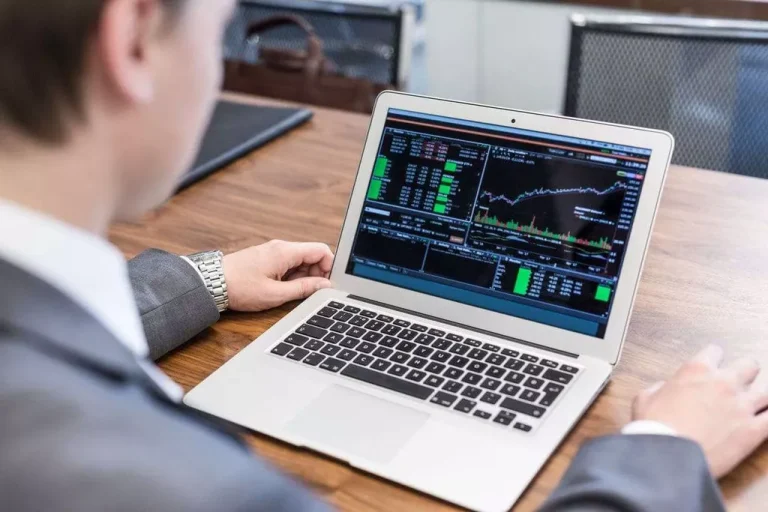Content
In the cryptocurrency market, liquidity plays a key role in determining how easily digital assets can be traded at stable market prices. A liquid market allows for smooth buying and selling of assets with minimal impact on Initial exchange offering price, while an illiquid market can lead to higher price volatility and slippage. Cryptocurrency liquidity providers contribute to this by adding funds to liquidity pools, ensuring that markets have enough supply to meet demand.
Best Crypto Copy Trading Platforms: A Curated List 2024
- First, it causes wider bid-ask spreads and more price volatility, making it difficult for traders to execute orders at the prices they want.
- While Bitcoin is intended to be a form of digital cash, it does not have anywhere near the levels of liquidity found in fiat currencies like the U.S. dollar.
- Bid-ask spreads are generally narrower in this case, as the sellers and buyers are plentiful in the sector, and it is much easier to match supply and demand in terms of prices.
- Stablecoin reserves represent untapped potential, often likened to “dry powder” waiting for market conditions to improve.
- Automated systems, known as smart contracts, facilitate trades based on the pool’s available assets, ensuring smoother transactions at fair market prices.
- High liquidity facilitates more active trading and allows traders to find matching orders faster and with fair market exchange rates.
- This reduces the risk of price manipulation and makes the market more reliable.
It should be noted that Bitcoin’s liquidity and trading volumes have increased tremendously since the early days of the technology. Other highly liquid assets including USDT, which is essentially a peg of cash, and Ripple, which is used heavily by banks and financial institutions. When different exchanges in the cryptocurrency space are compared, one of the terms that gets thrown around more than any other is liquidity. Liquidity enhances the price discovery process by enabling a constant flow of trades and information. A liquid market allows buyers and sellers to transact at any time, providing a continuous https://www.xcritical.com/ stream of market data and trades. This information helps participants make informed decisions and ensures that assets are bought and sold at reasonable prices.
The Positive Outcomes of High Liquidity in Crypto
The term “internal liquidity” describes the liquidity a cryptocurrency exchange manages with its assets, like liquidity pools and internal order books. Exchanges frequently use their own algorithms and market-making techniques to ensure enough liquidity is available for trading. Exchanges can improve trading crypto exchange liquidity solution conditions, such as tighter spreads and less price slippage, by keeping sufficient internal liquidity. Instead of traditional market-making systems, AMMs rely on liquidity pools, which are smart contracts that hold reserves of two or more tokens, which traders can trade against. These pools allow users to trade cryptocurrencies without the need for a traditional buyer and seller to create a market. Trading volume represents the total amount of digital assets traded on an exchange over a specific period.
What is Crypto Liquidity, And How Does It Impact Market Stability?
The purpose of this website is solely to display information regarding the products and services available on the Crypto.com App. Some AMMs offer strategies to mitigate impermanent loss, such as providing insurance-like mechanisms or adjusting the fee structure. Until then, stablecoins remain the wild card, holding the power to reignite activity in a market.

Many in the industry believe that it managed to set the standard for future airdrops. The average allocation was worth around $45K – $50K, making it one of the most lucrative airdrops in history. It focuses on stablecoins, ensuring they have a consistent value and enough supply so users can exchange them for fiat money or other cryptocurrencies.
An asset’s trading volume, the number of orders in the order book, and its popularity among exchanges all affect how liquid it is. The ease and effectiveness of digital assets being purchased or sold without substantially affecting their price is known as liquidity in crypto exchanges. In other words, it concerns the speed at which an exchange can connect buyers and sellers and finalise deals. In return, they receive liquidity tokens that represent their share of the pool. LPs earn a fraction of the transaction fees generated by the trading activity within the pool. While these services improve outcomes for swappers [3], PMMs earn fees that would have otherwise gone to on-chain LPs, affecting their overall profitability.

Exchanges that reduce transaction fees can potentially draw in more traders, raising trading volume and liquidity. Liquidity is a key component of a cryptocurrency exchange that influences the trading experience. Trades can be completed swiftly and at prices near market value when there are many buy and sell orders or deep order books. These figures highlight the rapid fluctuations in market capitalisation and trade volume within a single day. We present these numbers to emphasise liquidity’s critical role, enabling efficient trading and ensuring swift transactions at stable prices.
Regulation provides a sense of security for traders, often encouraging more participation and thus improving liquidity in the market. Arbitrage traders increase market liquidity by exploiting price disparities between cryptocurrency exchanges. To level the playing field for prices across platforms, they purchase assets at a lower price on one exchange and sell them at a higher price on another. First, trading volume plays a significant role because it ensures a steady flow of assets, which improves liquidity when there is more activity and numerous buy and sell orders.
Gold futures ended lower on Tuesday, giving up early gains due to a jump in US Treasury rates, as traders continued to follow events surrounding the Russia-Ukraine conflict and inflation concerns. Arthur Crowson is an award-winning writer and editor who hails from the Pacific Northwest. His career began in traditional news media but he transitioned to online media in the mid-2000s and has written extensively about the online poker boom and the rise of cryptocurrency. There is usually a close relationship between liquidity and volume, but high volume does not necessarily mean high liquidity.
Liquidity is impacted not only by trading volume but also by the network effect of increasing participants. The more individuals that buy, sell, and trade a cryptocurrency, the more liquid it becomes. This effect is amplified in cryptocurrencies that support wide-ranging applications, including smart contracts and decentralised apps (dapps), attracting a diverse ecosystem of users and developers. Our paper also contributes to the literature on informed trading taking place in DEXs. Capponi, Jia, and Yu [6] show that trades with higher priority fees contain more information and have a higher price impact.
He writes about technology, markets and politics, and has bylines for Forbes, Digital Trends, CCN, Wired, TechCrunch, the Verge, the Sun, the New Internationalist, and TruthOut, among many others. Assume that Exchange A experiences a sudden increase in demand for coin X, pushing its price to a brief peak of $30,000.
This trend indicates strong HODLing behavior but raises concerns over diminishing liquidity on exchanges. While trading activity has plummeted, the rising supply of stablecoins and the role of global M2 money supply offer a complex but critical backdrop to the market’s next moves. The crypto market is in a state of flux, with low liquidity, falling capital inflows, and heightened investor fear dominating the narrative. While Hyperliquid’s main focus is providing one of the best DEXs in the market, recent security concerns have been raised after DPRK hackers started testing its trading platform. Moreover, its reliance on a small number of validators and quorum-based transaction approval generated fear. At this point, all you need to do is input the original network (in this case, Ethereum) and the destination (Arbitrum), select the token (USDC), and hit confirm – the button is found right below.
It involves verifying that the digital assets held by the exchange on behalf of its customers correspond to the number of assets claimed by the exchange. PoR audits are typically conducted by third-party auditors who analyse the exchange’s holdings and liabilities to ensure they match and publish the results for public consumption. Decentralised exchanges (DEXs), on the other hand, operate on a peer-to-peer basis without a centralised authority. They use smart contracts to facilitate trading directly between users, eliminating the need for intermediaries. Understanding liquidity helps investors assess the ease with which they can enter or exit positions and manage their financial needs.
